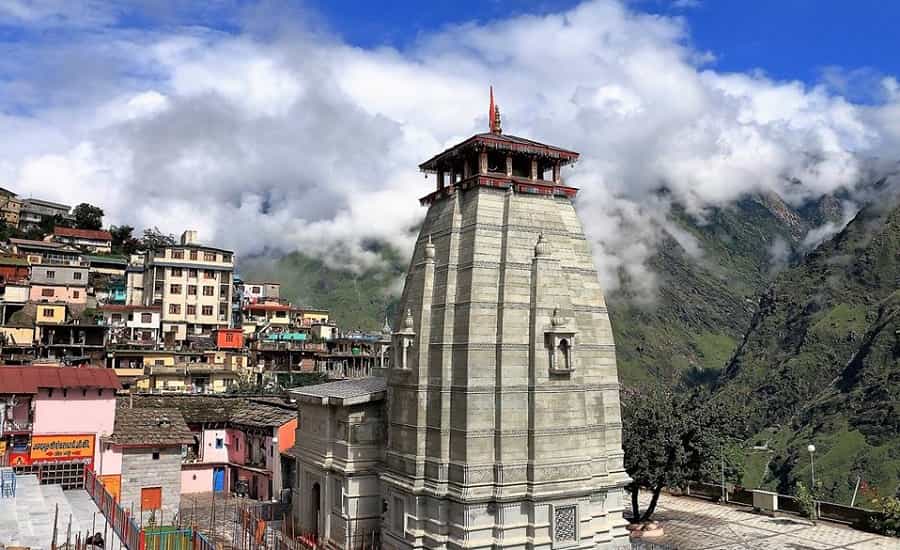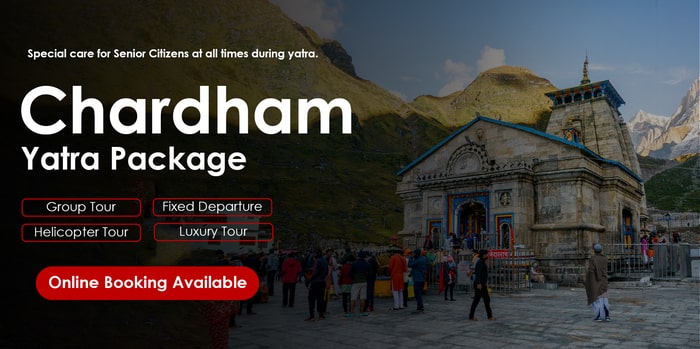Last Updated on January 17, 2025
Situated in the scenic district of Joshimath, this temple is not only a popular tourist spot but is also an incredibly famous part of the Sapt Badri Yatra circuit. Also known as Narsingh Temple, the presiding deity at this temple is Lord Narsingh, the 4th incarnation of Lord Vishnu, represented in the form of half lion and half human. Located in the lower parts of the lower bazaar region of Joshimath, this temple attracts a huge throng of Vaishnavites and pilgrims from across India, looking to offer their darshan at this holy temple.
- Location: Narsingh Temple is in Joshimath, Uttarakhand, part of the Sapt Badri Yatra.
- Deity: Dedicated to Lord Narsingh, the half-lion, half-human incarnation of Vishnu.
- Miracle: The statue’s arm becomes thinner each year.
- Winter Home: Lord Badri’s idol is shifted to Joshimath during winter.
- Access & Timing: Temple is 0.5 km from Joshimath bus stand, open 5 am to 8:30 pm. Best to visit 7:30-8:30 am.

Narsingh Temple – Winter Home of Badri Vishal:
With the onset of the winter months, when the temple kapat (doors) of Badri Vishal shut down for darshan for a period of 6 months, the idol of the presiding deity of Lord Badri is then shifted to this temple at Joshimath. The idol is brought down amidst great celebration and dances and is placed right next to the idol of Lord Narsingh by the priests. The pilgrims on their winter char Dham Yatra or Panch Badri Yatra visit this temple to offer their prayers, which is more convenient since the entire region of Badrinath remains covered under a thick layer of snow.
Lord Narsingh Idol at This Temple is Showcasing Miraculous Changes:
1- Located in Uttarakhand, the idol of Lord Narsingh here undergoes a miraculous change every year.

2- It is an ancient belief that during the 8th century AD, Adi Shankaracharya started preaching to the people about the creation of the universe and the origin of God.
3- During this time, Shankaracharya enshrined a statue of Lord Vishnu as an incarnation of Lord Narsingh in Joshimath.
4- In this statue, one arm of the Lord is made thin and gradually becomes thinner each day.

5- It has been mentioned in the Samhita created by the saint Sanat Kumar of Kedar Khand that once the hand of this statue breaks off from the main idol of Narsingh, then the peaks known as Jay and Vijay, located in a place called Patmila near Vishnuprayag, will merge into one, and the visit to Badrinath Dham will become completely inaccessible.
6- Pilgrims will make their way to the Tapovan area of Bhavishya Badri to get a glimpse of the Lord, as mentioned in Sanat Kumar’s Samhita.
7- It is also said that during the 8th century, Adi Guru Shankaracharya had established the Vishal Badri.

8- He also wrote a futuristic note on the stone close to the temple of Bhavishya Badri. However, the language of this text has still not been deciphered, as the language is unknown to this day.
How to Reach:
This 12,000-year-old temple is easily accessible since it is situated in the lower bazaar area of Joshimath. The temple can be easily reached by covering a walking distance from the Joshimath bus stand, which is just 0.5 km away. It is 10 km from the main town and is about a three-minute walk.
If you are traveling by train, the nearest railway station is in Rishikesh, which is 256 km from Joshimath. After de-boarding from the station, you will be required to hire a cab, taxi, or take a bus headed towards Joshimath. Once you reach the bus stand, you can make your way to the temple, which is located in close proximity to the stand.
Opening and Closing Time of the Temple
The temple opens at 5 am and closes at 8:30 pm. If you want to have a good look at the arm of the statue, you should visit when the statue of the Lord is being bathed, between 7:30 am to 8:30 am.
Best Time to Visit
Being located in the hilly regions, the temple should be visited during the comfortable summer months of April and May. Traveling to hilly regions should be avoided during the monsoon months of July and August, as the entire area remains susceptible to unexpected weather changes. You can also visit this place during the winter months of October and November when the idol of Lord Badri is brought down to this temple, which serves as his winter home. The remainder of the months is uncomfortably cold for visiting this region.







 Call
Call WhatsApp
WhatsApp Enquiry
Enquiry